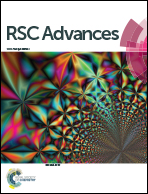Dewatering of drilling sludge by ultrasound assisted Fe(ii)-activated persulfate oxidation
Abstract
An ultrasound assisted Fe(II)-activated persulfate oxidation method was put forward to improve the dewaterability of drilling sludge in this research. The water content in the filter cake and specific resistance to filtration (SRF) were measured to evaluate the sludge dewaterability. Volatile suspended solids (VSS), transmittance of supernatant, microstructure, particle size distribution and zeta potential were tested to justify the proposed mechanism. The results showed that appropriate ultrasound assisted Fe(II)-activated persulfate oxidation could not only further enhance the sludge dewaterability but also reduce the reaction time as well. The optimal conditions for this method were 1.6% sodium persulfate, 0.8% ferrous sulfate, 40 W ultrasonic power and 45 min reaction time. Reduction of VSS and an increase of transmittance were further achieved compared to oxidation alone. SEM results and the decrease of particle size after the treatment confirmed the disintegration of sludge flocs, which promoted the release of bound water. A synergistic effect mechanism of ultrasound and chemical oxidation was proposed, with ultrasonic cavitation disintegrating the flocs, exposing the interior organics and persulfate further oxidizing the released organics.



 Please wait while we load your content...
Please wait while we load your content...